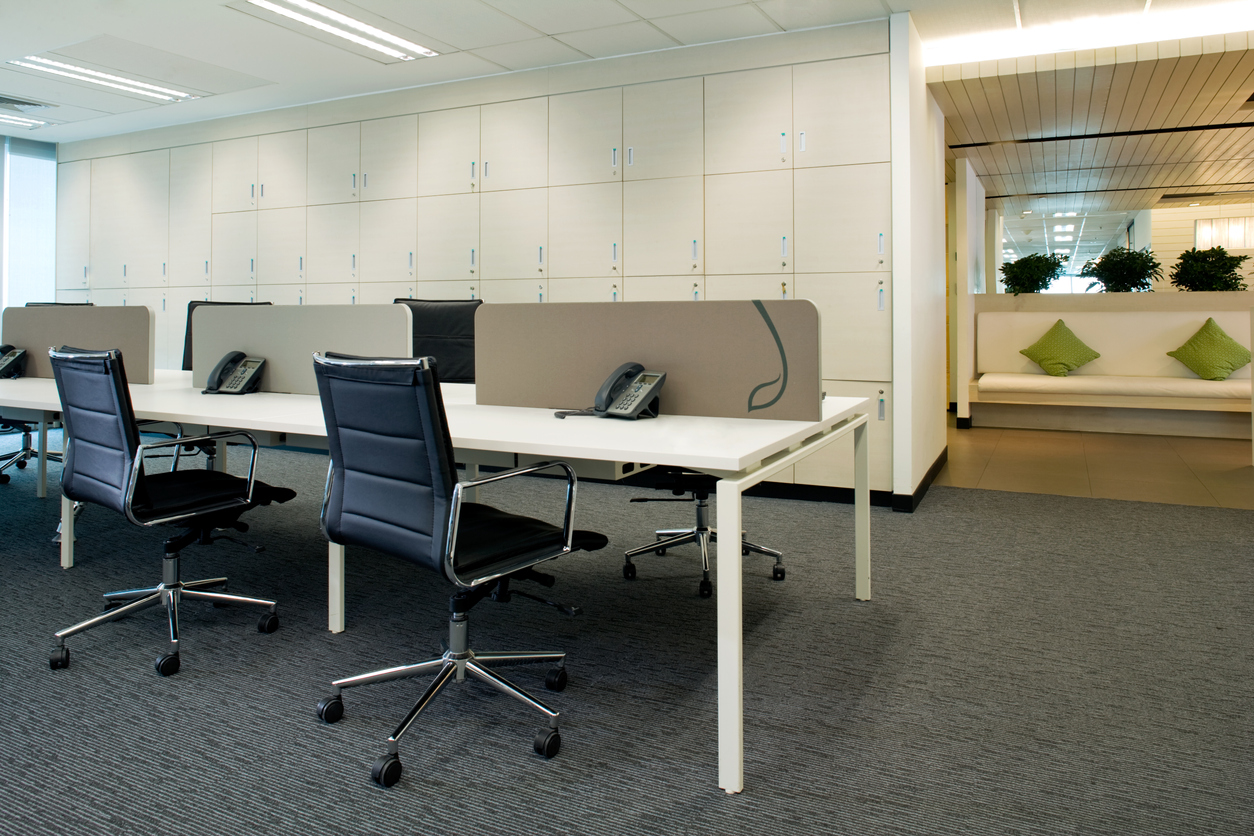Desk hoteling (as well as office and workspace hoteling) is a rising trend in the corporate world. After having to work exclusively from home for more than a year, many 9 to 5 employees are eager to get back to the office, at least part-time.
To accommodate new realities and expectations, many offices and companies are embracing hybrid work models. People work from home for a few days each week, and come into the office on the other days. When executed well, hybrid models allow companies and staff to enjoy greater mobility, productivity, flexibility, and efficiency.
Desk hoteling is here to stay
Desk hoteling, sometimes referred to as hot desking, is a big part of the hybrid work solution. It eliminates the need for assigned seating in a workspace, and instead requires team members to reserve a desk or a room for whatever suits the type of work they need to do on a particular day.
Not only does this concept help ensure a safe and organized workspace, hotel desks are also a simple solution to limited office space. If your company grew over the last year, and now there are more people than desks, office hoteling makes it possible to allow all staff to access the resources they need without having to move to a new space.
Companies need a user-friendly system for desk hoteling to work
Much like a traditional hotel, there must be a simple and accessible process in place for desk hoteling to be successful. Imagine if customers just walked into a hotel whenever they needed a room, and checked out whenever, instead of booking in advance. Though this concept works for small motels, it would be a nightmare for larger establishments. The same can be said for desk hoteling. Leaders and managers must ensure that the hoteling process serves the needs and interests of their employees. Otherwise, staff may simply stay home. Similarly, staff need to respect the new rules, procedures, and other teammates so that this setup can remain a long-term option.
The dos and don’ts of desk hoteling
Each company or office should implement its own rules and processes for desk and space sharing. But, there are some habits that all workplaces will want to apply, and avoid, to keep people happy and productive.
These best (and worst practices) are applicable to big and small offices, coworking spaces, and any other spaces that have done away with dedicated work stations.
Employers/office managers
Do use a booking system
The best and easiest way to introduce or streamline a desk hoteling system is to move it to an online booking system. Desk hoteling software is becoming increasingly popular and common due to its simplicity and effectiveness. It basically allows managers to organize and manage all available workspaces from one platform. They can set and limit the hours that meeting rooms are available, block off desks so that social distancing can be maintained, and even determine how often employees can come into the office each week. Setup is easy and generally does not require any additional hardware.
Most space management software systems have a mobile app so that staff can plan for their workweek and book a desk from their phone. It’s a very simple process that only takes a few minutes to complete. Employees will be able to confirm their booked space through the software, and may even receive an email confirmation if management wants to use this feature.
Do set expectations
It’s important that managers set expectations for their modernized work environments. For example, do staff have to come in at all if they don’t want to? Have mugs and plates been removed from the office to prevent the spread of germs? What happens if an employee is scheduled to come into the office on Monday, but is feeling unwell on Sunday night? Managers should try and answer all of these types of questions so that their team is prepared to show up and work when the time comes. Provide staff with a contact number or address if necessary so that they can always receive help in the office if they need it.
Also, if there are new cleaning policies (for example, staff must wipe down their workspace before they begin and when they’re done), make that clear and make sure cleaning products are always available.
It may be useful to provide a hotel desk manual or policy document to answer FAQs and address concerns. This can be a physical document, or, if the team uses an IWMS platform, it can be uploaded to and stored on the software’s resource centre.
Do set rules and limits
As companies become more comfortable with hybrid working, office managers may identify new trends and issues. For example, there may be enough space to satisfy demand on Mondays and Fridays, but staff end up competing for desks Tuesdays, Wednesdays and Thursdays. If this is the case, management may have to make rules about how many times each week staff can come in on peak days, or transform a meeting room into a quiet workspace on busier workdays.
Don’t leave it to employees to figure out where their workplace is
If an employee booked “Desk 1” on the booking system, but has no idea where that desk is located within the office, there will be problems. Clearly label desks or spaces on the software system and in the office. Management may even include descriptions of the equipment available at each space, and unique identifiers, when setting up the booking system.
Don’t create inefficient work settings
If the sales team needs a phone or webcam, and developers cannot work without two monitors, make sure that the equipment is a) available, and b) is easy for team members to find when they are in the booking system. This is where adding desk descriptions comes in handy.

Don’t forget to check up on things like ink levels, paper inventory, subscription payments, etc. Little problems like an expired Adobe license can create big roadblocks for employees who just want to get to work.
Don’t let safety practices slip
Now is not the time to scale back on office cleaning services or hand sanitizer. While a lot of progress has been made thanks to vaccines, it’s still important to keep health and safety a top priority.
Employees
Do read messages from your building/managers
Emails and communication from the company or building are more important than ever. They’ll have useful and relevant information about back to work rules/procedures, notices about schedule changes or updated passwords, and answers to FAQs. Employees who stay up will have a smoother, more enjoyable in-office experience.
Do help keep the office clean and organized
This applies to both personal and communal areas. Since staff may only be in the office once or twice a week, it’s imperative they not leave their stuff lying around. It’s probably not a good idea to store food in the fridge for more than a day. If you don’t finish your lunch, throw out the rest or take it back home.
If desks and chairs are moved around for a meeting, make sure everything is returned to its original spot. This makes it much easier for tomorrow’s team to find exactly what they need. Wipe down or sanitize your workspace at the end of the day.
Do tell someone when supplies are low
If there’s only one coffee pod left, or the ink is low, let the office manager or person responsible for ordering supplies know. They might be in the office less frequently, and won’t have as many opportunities to catch these sorts of things by themselves.
Don’t sit at a spot not assigned to you
Just because a desk is open at the beginning of the day doesn’t mean it’s free for the entire day. Another employee might have scheduled that spot, but isn’t coming in until later. Some offices support flextime, or in the case of a coworking space, people may come in for only part of the day. To avoid an awkward situation, make sure you sit at the spot you reserved.
Don’t take equipment home unless it has been signed out
Some offices don’t mind lending equipment to employees so they can have a more functional home office. However, it’s challenging for management to keep track of who’s taking what now that they aren’t always in the office. One day, there are five headsets, but next week, there are only two. Where did they go? Use the office’s sign-out system, be it electronic or paper, to keep employees accountable and help managers keep track of valuable office assets.


